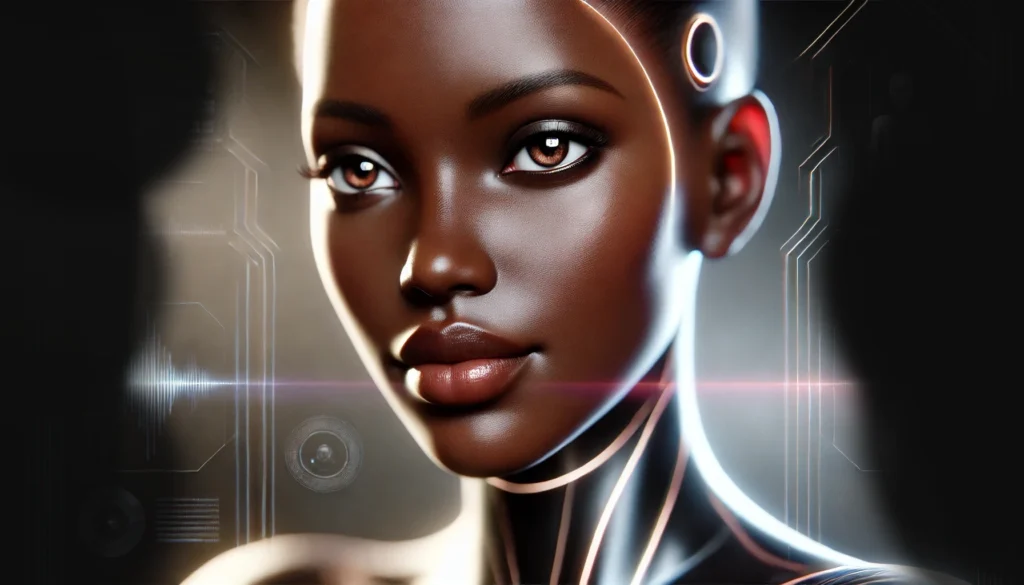
Training a chatbot to understand human diversity is no small feat. OpenAI’s chatbots like GPT need to process enormous amounts of data and grasp subtle nuances in culture, context, and language.
Let’s dive into the process that makes these AI systems so versatile, and uncover how they become culturally aware.
The Heart of Training: Data, Data, and More Data
OpenAI’s chatbots don’t start with an innate understanding of diverse languages or cultures. It all begins with massive amounts of data. Texts from books, websites, and even conversational data from across the world contribute to the pool from which the AI learns. This variety ensures that the chatbot isn’t bound to one culture or language.
By exposing the chatbot to a range of languages and dialects, it becomes more capable of responding with culturally relevant and linguistically appropriate replies.
But data is only half the story.
Language Barriers and Multilingual Capabilities
Language isn’t just about translating words—it’s about understanding context, idioms, and cultural connotations. Training a chatbot in multiple languages means capturing more than just vocabulary. For example, in one culture, expressing disagreement might be more indirect or polite, while in another, it could be much more straightforward.
Chatbots like GPT are trained on a wide range of languages, giving them the ability to recognize and adapt to the user’s tone and context. They aren’t just swapping English words for their Spanish or French counterparts. Instead, they learn to adapt their style and even humor to fit cultural norms.
It’s fascinating how this impacts communication. For instance, a chatbot trained in Japanese might interpret politeness levels differently from one trained in English or Swahili. This multilingual versatility is a vital asset, helping users feel understood no matter their language.
Cultural Sensitivity in AI
Language alone isn’t enough. OpenAI Chatbots must also be aware of cultural sensitivities. Humor, for instance, varies significantly across the world. A joke that works in one culture could be offensive in another. That’s why OpenAI’s training process includes a focus on cultural sensitivity and awareness.
The chatbot learns to recognize cultural cues, ensuring its responses are respectful and contextually appropriate. By running feedback loops with diverse groups, OpenAI ensures that its AI doesn’t unintentionally make insensitive comments or perpetuate cultural stereotypes.

As the chatbot continues to interact with users, it refines its understanding of what is considered acceptable and respectful across different regions.
Battling Bias: A Challenge for OpenAI Chatbots
Even with extensive training on diverse data, bias remains a persistent challenge in AI development. OpenAI Chatbots are not immune to these issues. Bias can creep in through the training data, reflecting the imbalances present in the sources used to train the model.
OpenAI combats this by conducting regular audits to detect and minimize bias in the chatbot’s responses. Additionally, having diverse teams involved in the development process ensures that multiple perspectives are considered when designing the chatbot’s behavior.
The fight against bias is ongoing, but OpenAI Chatbots are constantly improving as researchers identify new methods to create more equitable and inclusive AI systems.
Learning From Real-World Interactions
What makes OpenAI Chatbots truly remarkable is their ability to learn from real-world interactions. Each conversation provides valuable data on how people from different cultural backgrounds communicate. Over time, this helps the AI adapt and refine its responses, ensuring that it becomes even more adept at handling cultural nuances.
As users interact with the chatbot, feedback is used to update the model, enhancing its ability to engage in more meaningful and culturally relevant conversations.
Bridging the Gap Between Cultures
One of the most impressive aspects of OpenAI’s chatbot training is how it bridges cultural gaps. When people from different parts of the world interact with AI, they expect to be understood in a way that feels natural to their own cultural context. This involves training the model to recognize not just languages, but also subtle cultural distinctions.
For example, in some cultures, direct eye contact can be considered a sign of confidence, while in others it might come across as disrespectful. While a chatbot can’t make eye contact, it must be aware of how to mirror the subtleties of speech that reflect this difference. It does this by studying how people from different regions express respect, urgency, or empathy.

This depth of cultural understanding is made possible through localized datasets—training materials that include culturally specific references and linguistic quirks. OpenAI’s models benefit from a globally inclusive approach, helping them cater to users in a more personalized and nuanced manner.
Handling Slang and Regional Expressions
Slang and informal speech vary widely across regions, and OpenAI Chatbots are trained to understand these nuances. Think about phrases like “cool” in the U.S., “sorted” in the UK, or “banger” in Australia. These informal terms add richness to conversations, but they can be confusing without proper context.
OpenAI trains its chatbots to not only recognize slang and idiomatic expressions but also to understand their meanings in specific cultural contexts. This allows the chatbot to mirror a conversational tone that feels more relatable and less robotic.
By incorporating slang and regional expressions into its training, OpenAI Chatbots can better adapt to casual conversations, making interactions feel more natural and engaging for users worldwide.
Improving Emotional Intelligence
While OpenAI Chatbots are primarily designed to understand language and culture, they also aim to grasp emotional undertones. This involves picking up on cues that indicate whether a user is happy, frustrated, or sad. For example, if a user seems upset, the chatbot adjusts its tone to be more empathetic and supportive.
This level of emotional intelligence is critical when dealing with sensitive issues, as it allows the chatbot to offer responses that are not only culturally appropriate but also emotionally attuned. Through natural language processing, OpenAI Chatbots analyze the tone and sentiment of conversations, improving their ability to offer comfort or assistance when needed.
For example, the chatbot might offer a more reassuring response if it detects frustration, or it could adjust its language to be more upbeat if the user is in a positive mood.
Ethical Considerations in Cross-Cultural AI
As OpenAI Chatbots become more integrated into everyday interactions, ethical considerations must be front and center. OpenAI is committed to ensuring that its chatbots uphold standards of fairness, inclusivity, and transparency. This means minimizing any potential harm that could arise from culturally insensitive or biased responses.
OpenAI has implemented ethical guidelines during the development and training of its chatbots to prevent them from reinforcing stereotypes or spreading misinformation. Additionally, transparency is crucial—users should always know that they are interacting with an AI, not a human, which fosters trust and clarity in these digital conversations.
By constantly evaluating and improving its ethical guidelines, OpenAI works to ensure its chatbots are respectful and fair across all cultural contexts.

Continuous Learning Through User Feedback
OpenAI Chatbots are not static. They are designed to evolve and improve through ongoing feedback from users. Each interaction is an opportunity for the AI to learn more about cultural differences and linguistic nuances. This continuous feedback loop helps the chatbot stay updated with emerging cultural trends and new slang, ensuring that it remains relevant in conversations.
OpenAI regularly updates its models based on real-world data, enabling the chatbot to adapt to changing communication styles. This makes OpenAI Chatbots more flexible and better equipped to handle a wider range of cultural and linguistic diversity over time.
Collaborating with Cultural Experts to Train OpenAI Chatbots
To ensure that OpenAI Chatbots truly understand diverse cultures, collaboration with linguists, cultural specialists, and researchers is essential. These experts provide insights into language patterns, idiomatic expressions, and cultural values that datasets alone may not fully capture. By working with individuals who have deep knowledge of specific cultures, OpenAI can enhance the chatbot’s ability to handle complex cultural nuances.
For instance, a chatbot trained on Western data might not fully understand the intricacies of respect and hierarchy in certain Asian cultures, where language and behavior shift based on social status. Experts help OpenAI Chatbots become more attuned to these subtleties, improving the AI’s ability to engage in culturally sensitive and accurate conversations.
This collaborative approach ensures that the AI’s understanding is holistic, not limited by the data it was initially trained on. The result is a more globally aware and adaptive chatbot.
Adapting to Cultural Shifts in Real-Time
Culture is dynamic. Trends, expressions, and even values can shift rapidly, especially in a world as connected as ours. To stay relevant, OpenAI Chatbots are designed to adapt in real-time. New slang, memes, or even changes in societal norms can be quickly integrated into the chatbot’s knowledge base, ensuring it stays up to date.
For example, during global events like the rise of new social movements or cultural phenomena, the chatbot must adjust how it responds to stay sensitive to the current climate. By analyzing new data continuously, OpenAI ensures its chatbots evolve alongside cultural changes.
This adaptability allows the AI to remain an effective and respectful conversational partner, no matter how quickly the cultural landscape shifts.
Chatbots and the Future of Cultural AI
The journey toward creating truly culturally intelligent AI is far from complete. As OpenAI Chatbots continue to improve, the future holds exciting possibilities for deeper personalization and cross-cultural understanding. One area of focus will be refining the chatbot’s ability to interpret not just language, but the cultural contexts in which words are spoken.
Imagine an AI that could seamlessly mediate between cultures, helping businesses communicate more effectively or helping individuals better understand one another across cultural divides. This would enable the chatbot to act as a bridge, helping facilitate meaningful connections across borders.
The future may also see increased user customization, where individuals can tailor the chatbot to align more closely with their personal cultural preferences, making the experience even more personalized and relevant.
Empowering Users with OpenAI Chatbots
At its core, the goal of OpenAI Chatbots is to empower users through more effective communication. Whether helping someone navigate a foreign language, facilitating cross-cultural exchanges in a business setting, or simply offering a culturally aware conversation, these chatbots provide tools for smoother and more inclusive interactions.
By reducing the barriers of language and cultural misunderstanding, OpenAI Chatbots make it easier for people to connect and communicate across the globe. As the technology continues to evolve, its potential to promote global understanding and inclusivity will only grow.
These AI systems are not just designed to talk—they are built to listen and learn from the rich tapestry of human diversity. Through this ongoing development, OpenAI Chatbots are becoming key players in fostering a more connected, culturally aware world.
Resources
- OpenAI Research Blog
For insights into the ongoing development and challenges faced in AI training, particularly regarding cultural sensitivity and language diversity, the OpenAI Research Blog is an excellent resource. Here, OpenAI shares the latest advancements in AI technology and transparency in AI development. - Ethics and Bias in AI: AI Now Institute
The AI Now Institute is a leading organization focused on the social implications of artificial intelligence. They offer comprehensive research on bias, ethics, and the responsible use of AI, including how cultural bias in AI systems is addressed. - Multilingual AI and NLP: Stanford NLP Group
For a deeper understanding of how AI processes language, the Stanford NLP Group provides extensive resources on natural language processing, including handling multilingual data and cultural nuances in language.